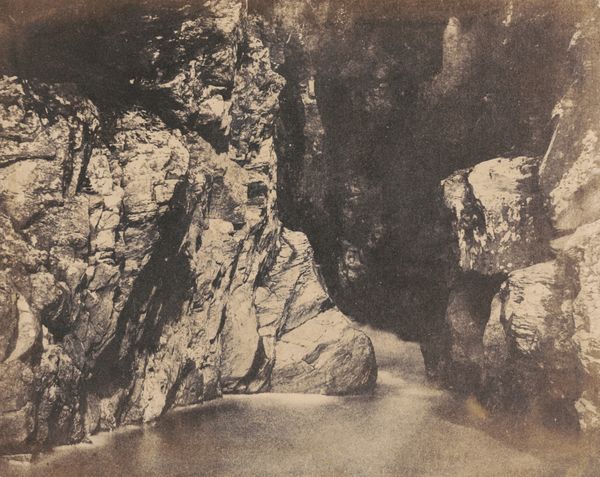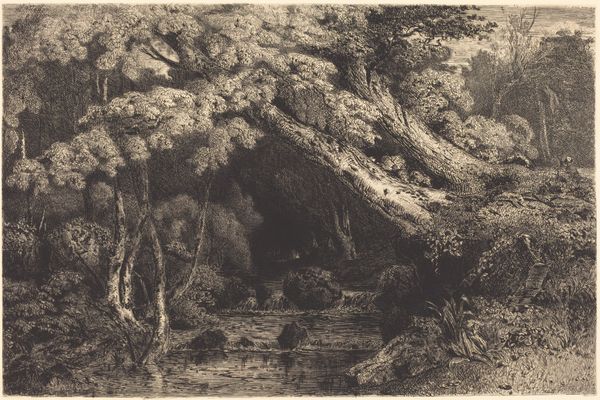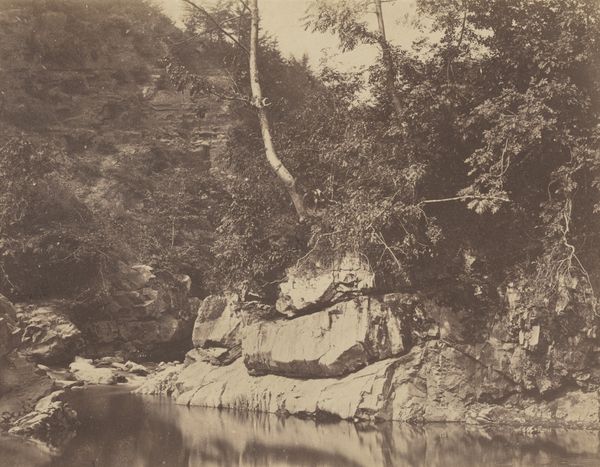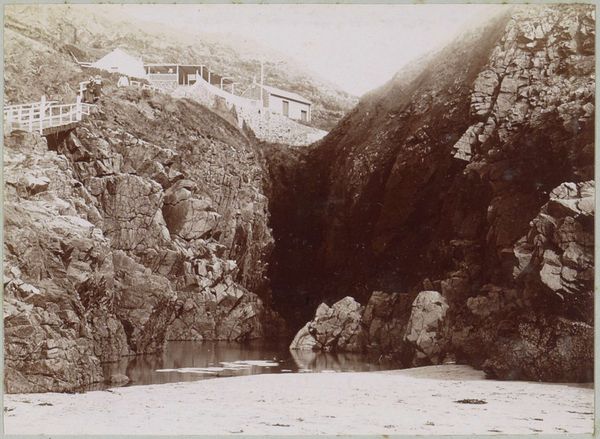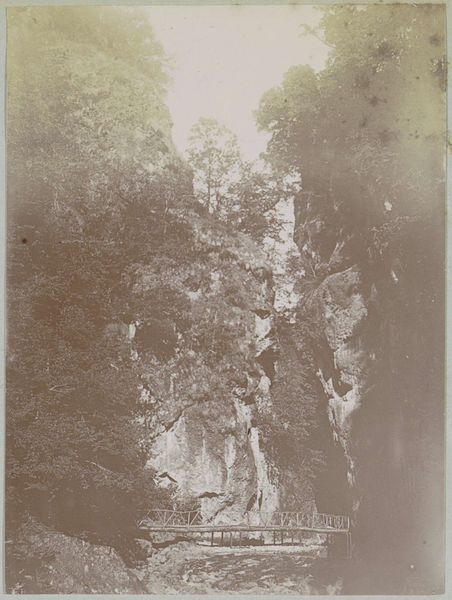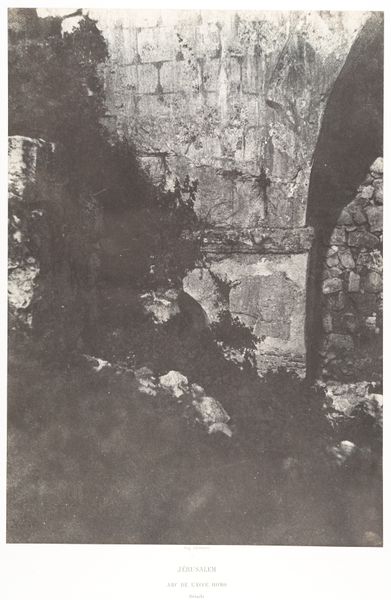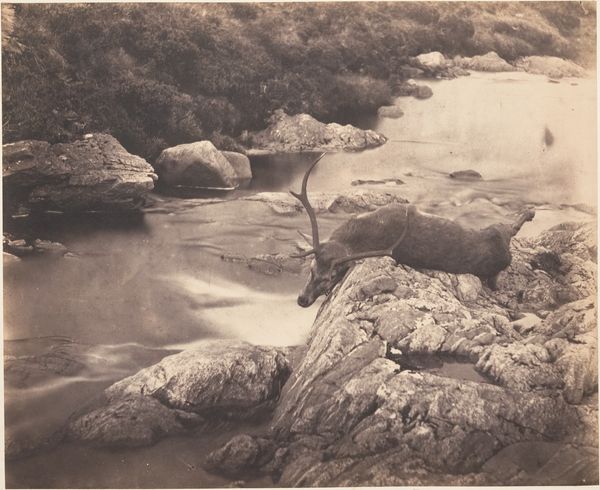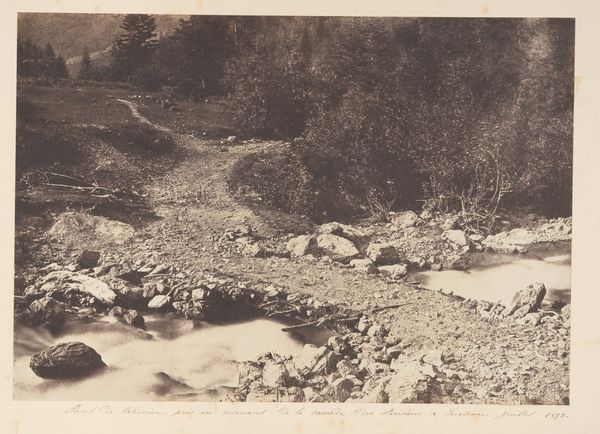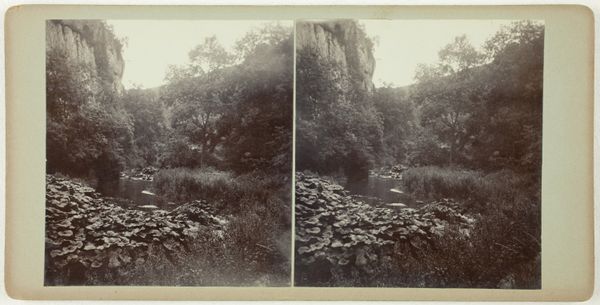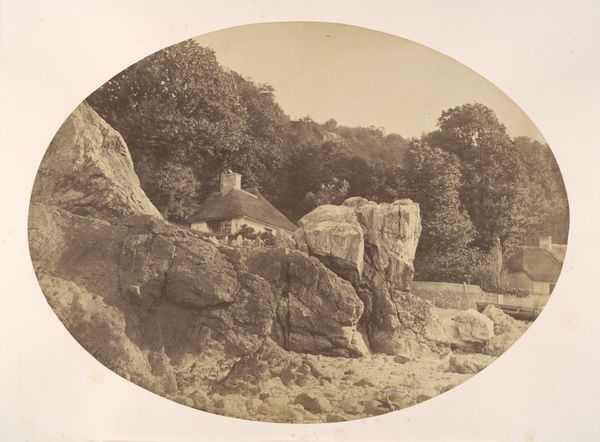![[Bank of the Rhumel, near Constantine, Algeria] by John Beasley Greene](/_next/image?url=https%3A%2F%2Fd2w8kbdekdi1gv.cloudfront.net%2FeyJidWNrZXQiOiAiYXJ0ZXJhLWltYWdlcy1idWNrZXQiLCAia2V5IjogImFydHdvcmtzLzdhMDFiYjk0LTI4M2UtNDMxMy1hNjZhLTcyNjhkZmI0ZWIwNS83YTAxYmI5NC0yODNlLTQzMTMtYTY2YS03MjY4ZGZiNGViMDVfZnVsbC5qcGciLCAiZWRpdHMiOiB7InJlc2l6ZSI6IHsid2lkdGgiOiAxOTIwLCAiaGVpZ2h0IjogMTkyMCwgImZpdCI6ICJpbnNpZGUifX19&w=3840&q=75)
[Bank of the Rhumel, near Constantine, Algeria] 1853 - 1858
0:00
0:00
daguerreotype, photography
#
landscape
#
daguerreotype
#
photography
#
realism
Dimensions: 9 3/8 x 12 1/8
Copyright: Public Domain
Curator: Looking at John Beasley Greene's photograph, titled [Bank of the Rhumel, near Constantine, Algeria], made between 1853 and 1858, one is struck by its complex chiaroscuro. Editor: It’s so brooding, almost claustrophobic. The light barely touches the water. What kind of feeling did the artist want to evoke, do you think? Curator: Greene, a trained dentist turned photographer, was profoundly interested in documenting Algeria’s landscapes during a period of French colonial expansion. His technique here – the daguerreotype – offered an unparalleled level of detail. The material itself lends to that specific tonality and aesthetic of that time. Editor: That process, the daguerreotype, isn’t easy or immediate. You really had to consider your composition and the availability of light. See how he plays with texture: the craggy rocks versus the smooth, reflective river. It guides the eye right through the frame and gives the picture its particular energy. Curator: Precisely. His choice wasn’t merely aesthetic. By rendering the Algerian landscape with such precision, Greene implicitly participated in the colonial project, documenting and thus claiming the land for French imperial interests. Consider how photographic surveys of the time helped legitimize resource extraction and control. Editor: That's a persuasive argument; although in some ways the romantic light reminds me a bit of some paintings from that period. Did he consider that influence? Curator: The photograph also stands on its own aesthetic merit though as it predates many popular trends in both form and artistic style. It anticipates photographic approaches we see emerge later and offers much to reflect on from our modern perspective. Editor: The material conditions of its creation as a mirror of larger political agendas makes that reading quite complete and makes us ponder about this period that preceded the common practices we have today.
Comments
No comments
Be the first to comment and join the conversation on the ultimate creative platform.
